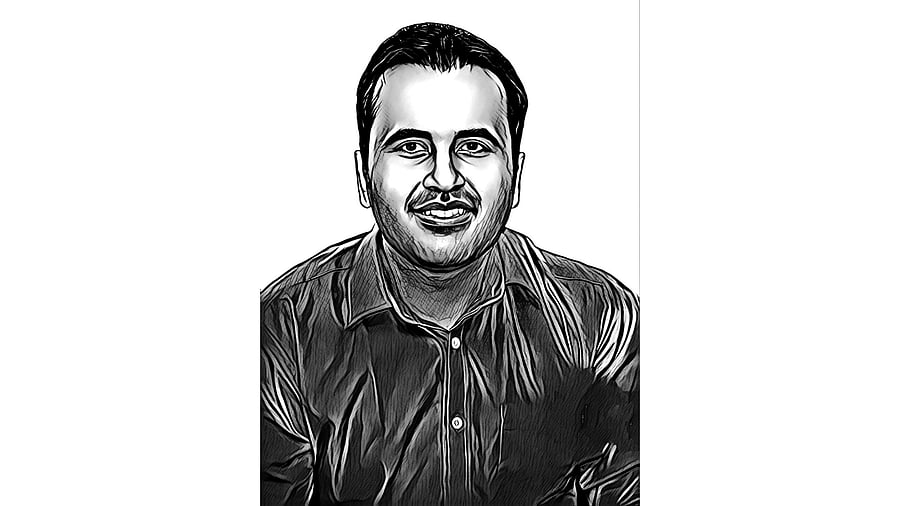
Rahul Bajaj is a practising lawyer with expertise in disability rights and IP law, and is co-founder of Mission Accessibility. He wears more hats than he can himself sometimes count. X: @rahul400
Credit: DH Illustration
The problem posed by stray animals – especially dogs – inhibiting the free movement of people is real, and for many, a daily ordeal. As a person with a disability, I have seen how this plays out. My NGO routinely receives complaints from persons with disabilities (PwDs) who face heightened risks: a dog chasing down a blind person due to their white cane, a nip at a wheelchair wheel or an aggressive bark that forces someone with mobility or sensory limitations into dangerous evasive manoeuvres. The vulnerability is magnified for those who cannot quickly move away or defend themselves.
This is why the Animal Birth Control (ABC) Rules and the infrastructure built around them feel like a step in the wrong direction. These Rules envisage dogs being sterilised, immunised, and then re-released into the same place from where they were captured.
ABC centres, as envisaged in these Rules, are either not in existence or dysfunctional. A short walk in almost any neighbourhood is enough to show that the system is not producing the desired results. This gap between policy and street-level reality is glaring.
Against this backdrop, the Supreme Court’s decision to take suo motu cognisance of the stray dog menace and its directions dated August 11 are welcome. It is an acknowledgment, at the highest judicial level, that the problem can no longer be left to patchwork solutions or underfunded municipal efforts. The idea of housing stray dogs in shelters or pounds is not in itself objectionable. It is common practice in many countries, and if implemented well, it can protect both human and animal welfare.
The trouble lies not in recognising the problem or proposing decisive measures, but in how the Court has framed its response. First, during the hearing, when a suggestion was made that the Court’s directions must be consistent with the Prevention of Cruelty to Animals Act, 1960, the Court brushed it aside with the remark that this is an emergency and so “no law, nothing.” This is worrying. Coming from the apex court, it signals an ends-justify-the-means approach that disregards statutory safeguards. To casually cast aside the governing statute undermines the very constitutional discipline the Court is meant to uphold.
Second, it is beyond dispute that the situation calls for a stern response. But why must such firmness be framed as a zero-sum choice between human beings and animals? When directing that dogs should be picked up and taken to shelters, the Court could easily have paired that with directions to ensure humane capture: avoiding injury, using trained handlers, and minimising distress. To be fair, the text of the order is a lot more balanced than the tone of the hearing. For instance, the Court directs that the competent authorities running the dog shelters must ensure that there is no overcrowding of dogs and that these dogs are duly fed and looked after. It also envisages the adoption of stray dogs by those interested.
Third, the Court’s heavy reliance on its contempt powers in this context is an uneasy fit. Contempt is a blunt instrument, best used sparingly. The risk is that municipal bodies or officials, already struggling with inadequate resources, will be more focused on avoiding the Court’s wrath than on building sustainable systems that work beyond the short term.
Equally concerning is the rhetoric. In stating that this is “the time to shoot and not to talk”, the Court may have intended to convey urgency, but such language risks deepening polarisation between those advocating for human safety and those defending animal rights. Ad hominem attacks on animal rights activists could have been best avoided. The judiciary’s example must rest not only on the decisions it hands down, but on the tone and reasoning it models.
The goal should be to prevent injuries and fatalities among people while also ensuring that animals are not subjected to unnecessary suffering. Framing the issue as “people versus dogs” reduces it to an unhelpful binary and distracts from the more constructive question: how can urban governance, veterinary services, and public awareness combine to make coexistence safe and sustainable?
As of this writing, the matter has been referred to a three-judge bench, which will have the opportunity to preserve the core solutions – removing aggressive or unvaccinated strays from the streets, prioritising public safety, and holding local bodies accountable – while tempering the excesses.
The Court was right to take the problem seriously and to signal that half-measures will no longer suffice. But seriousness must go hand in hand with legality, proportionality and compassion. Our streets must be safe for everyone, especially the elderly, children, and PwDs. But our solutions must also reflect the kind of society we aspire to be: one that does not treat vulnerable animals as expendable obstacles.